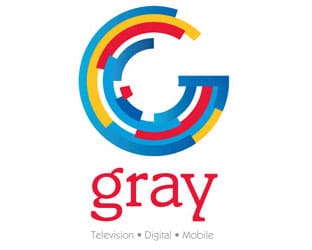 Public safety is a core “first principle” for federal and state decision-makers when setting public policy. Communications policy certainly is no exception. Preservation of this principle is critical to the current discussions among congressional members who are tasked with spearheading the reauthorization of the Satellite Television Extension and Localism Act (STELA), which is due to sunset by year’s end.
Public safety is a core “first principle” for federal and state decision-makers when setting public policy. Communications policy certainly is no exception. Preservation of this principle is critical to the current discussions among congressional members who are tasked with spearheading the reauthorization of the Satellite Television Extension and Localism Act (STELA), which is due to sunset by year’s end.
As part of the STELA reauthorization process, Pay-TV operators are shepherding an effort for Congress to eliminate the long-standing public safety-related requirement known as the lifeline ‘basic service tier’, which requires cable operators to provide millions of consumers with access to their local TV stations on the lowest priced service-tier.
Eliminating this rule would break from federal decision-makers’ long-standing commitment to first always ensure the safety of the American people in their deliberations on legislative and policy matters. The public record speaks for itself.
In response to the 9-11 Commission’s recommendations to address the need for a nationwide emergency broadband communications network for America’s first responders, Congress, in 2012, enacted legislation to establish and fund FirstNet.
Public safety and network reliability issues are also at the center of the FCC’s latest effort to support industry-led technology trials to expand Internet Protocol (IP) communications infrastructure in the U.S.
Much of the debate encompassing the initiative, which FCC Chairman Thomas Wheeler describes as the “fourth network revolution,” focuses on the public safety aspects of this modern infrastructure, including an inquiry into the reliability of IP-based voice communications during times of emergency.
The FCC and the Department of Homeland Security’s Federal Emergency Management Agency (FEMA) continue to work with broadcasters and cable and satellite TV providers to upgrade the nation’s Emergency Alert System (EAS), a long-standing national capability used to notify the public, via TV and radio, of potential public safety threats, 24/7.
Federal, state and local emergency responders have traditionally relied on TV and radio broadcasters to serve as necessary, real-time sources of information to keep the American public informed in times of disaster.
Given this vital role, it is odd that certain cable and satellite TV operators, among others, would suggest that TV broadcasters are using ‘public safety’ to influence certain rules and laws governing the U.S. video marketplace.
By eliminating the lifeline basic service tier rule, cable operators, in effect, could remove local broadcast TV stations from the cheapest cable programming package and force low-income households to pay upwards of three times the amount to get it back as part of more expensive expanded basic or premier programming packages.
Millions of Americans who subscribe to the lifeline basic service tier may not be able to afford a higher-priced cable programming package, nor have affordable alternatives for service in smaller TV markets. This was the basis under which Congress enacted this consumer protection in the first place.
In fact, pay-TV operators could choose to place local TV stations on separately priced tiers, forcing consumers to pay extra for the full complement of local broadcast television and access to real-time TV emergency alerts and warnings in their communities.
Cable operators may even choose not to carry all local TV stations as part of their service in specific markets, further limiting customers access to diverse viewpoints in news reporting, as well as their core choices for local news coverage.
In their own defense, pay-TV operators argue that this basic tier rule is outdated due to the changes in the marketplace since the 1992 Cable Act’s adoption.
Are the legitimate public safety considerations tied to the lifeline basic service tier requirement really an outdated impediment to the pay-TV industry’s business plans and potential profits?
Broadcasters fiercely contend that public safety should not take a back seat to proposals seeking an exclusive financial windfall for the pay-TV industry at the expense of consumers.
Motivations to eliminate the basic service tier and its impact on millions of American consumers are better understood in the light of cable operators’ market dominance over the nation’s video services.
Today, the top-10 largest pay-TV providers control over 90 percent of the cable and satellite subscriptions nationwide, and in approximately one-quarter of the local television markets a single company provides pay-TV service to 50-90 percent of the subscribers in the region.
Yet, despite this continued local market dominance, cable operators are urging Congress to eliminate the rule. Pay-TV operators have failed to provide an adequate justification in the public interest as to why this rule should be eliminated.
The potential impact of this proposed reform on the nation’s consumers is too great to ignore.
If Congress decides to eliminate this consumer safeguard as part of STELA, it will be a disservice to the American public and begin to erode the fundamental premise that Washington’s lawmakers and policymakers have long stood by – preserving public safety as a core ‘first principle’ in U.S. communications policy.
–Robert Kenny is director of Public Affairs for TVfreedom.org, a coalition of local broadcasters, community advocates, network TV affiliate associations, and other independent organizations. He formerly served as press secretary at the FCC.





